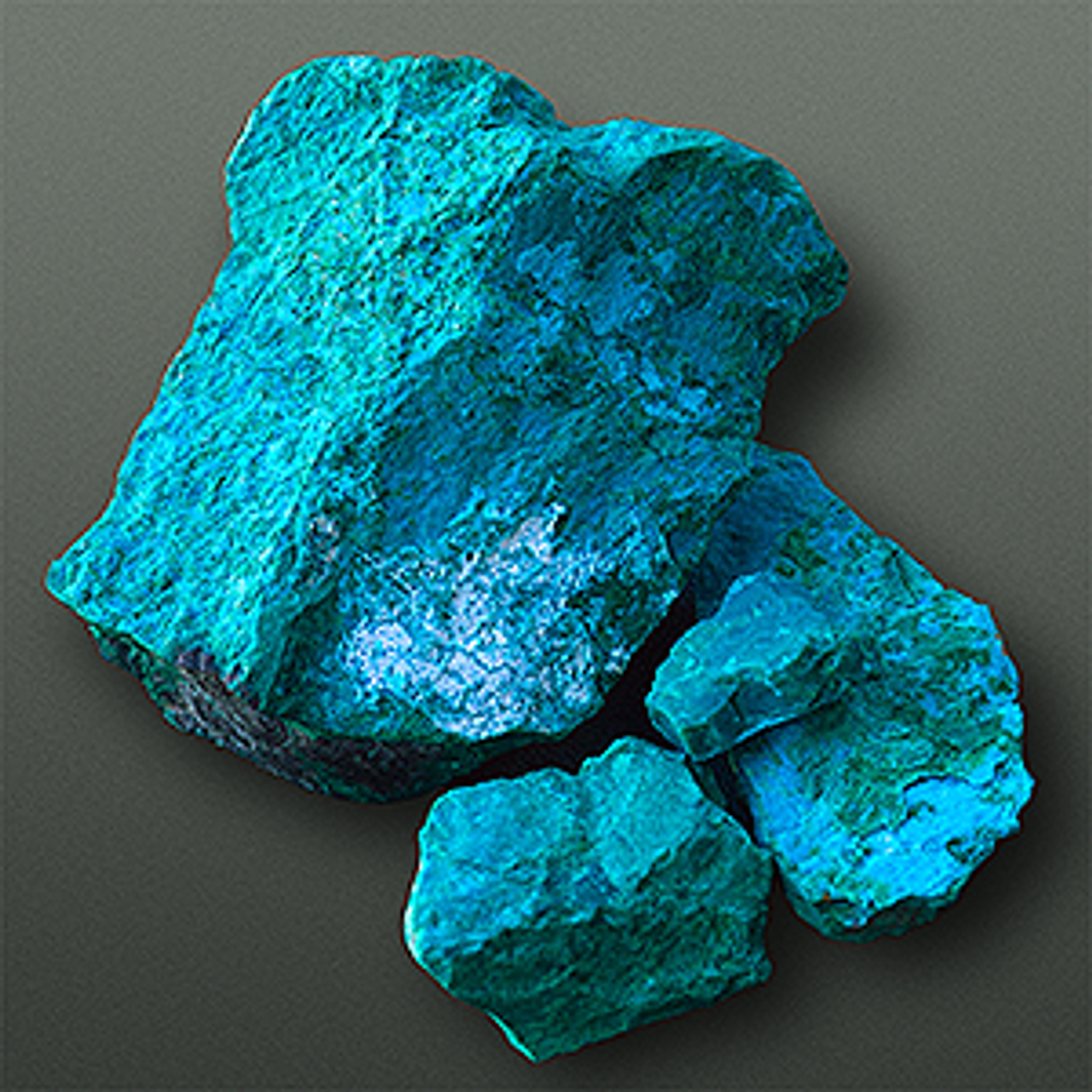Chrysocolla pigments

Chrysocolla, Cedar green, copper silicate
This natural pigment, suitable for icon painting (egg tempera) and watercolor painting without additional grinding, boasts a rich history dating back to ancient civilizations like the Egyptians, Greeks, and Romans. Known as chrysocolla, its name derives from the Greek words "chrysos," meaning gold, and "kolla," signifying glue. This secondary copper ore, mined since 3000 BCE, has served as both a gemstone and a blue-green pigment.
Chrysocolla lacks a crystalline lattice, appearing instead as an amorphous "silica gel" or gelatinous precipitate composed of hydrated copper silicate. It has been found in wall paintings at sites like Kizil in Turkistan and Egyptian tombs from the Twelfth Dynasty. In the 16th and 17th centuries, it was utilized as a watercolor pigment known as Cedar green.
The preparation of this pigment involves several meticulous steps. First, the mineral is crushed in a jaw crusher, followed by washing of the gravel. It is then carefully milled in a water bath using a ball mill to prevent over-grinding, initially with larger media and subsequently with smaller, denser media. After milling, the powder undergoes washing and levigation, with fine powder being repeatedly washed to remove milky solutions, resulting in a vibrant, finely textured pigment.
The resulting pigment powder retains its vibrant color, though under microscopic examination, the blue-green hue of the conchoidal fragments may be challenging to discern, sometimes appearing almost colorless. While highly transparent with low tinting strength, chrysocolla pigment shines beautifully in watercolor and egg tempera mediums. When mixed with oils, it yields a transparent, light green paint layer. (see additional images).

